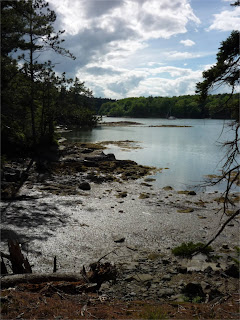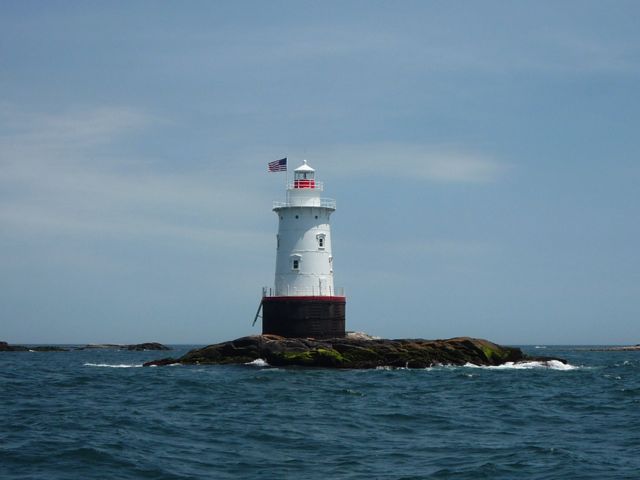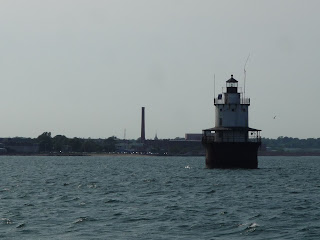[Maryanne]We last visited the area known as The Basin
back in 2008, it was beautiful then and still is now. So glad we were able to return, as you'll see from Kyle's report ...
[Kyle]We must’ve been tired. I awoke in the morning feeling like I hadn’t had nearly enough sleep. I toyed with the idea of getting up briefly, then decided I’d do so after a few more minutes of slumber. I repeated this process a few more times. This was fairly uncharacteristic of me. I’m generally not a “snooze button” guy. Even though I didn’t have an alarm this day, when I have one, I prefer to set the alarm for when I plan to actually get up instead of setting it early and then ruining the quality of my last few minutes of sleep by constantly interrupting it to hit a snooze button. I also tend to have a hard time getting back to sleep if I know I’ve only got a couple of minutes left.
As much as I like a good night’s sleep, I also tend to get up relatively early. Getting up after 9am makes me feel like my morning is already gone. So, imagine my surprise when I finally decided I was feeling awake enough to get out of bed, looked at my watch, and saw that it was 12:43pm! Whoa! How does that happen?
I know that an hour is an hour. We could have a full day and go to bed at 4am. I do this way too often at my job because they make me. That’s not how I work, though. If I didn’t want the next morning to mysteriously vanish too, we had to get to sleep at a somewhat normal hour. Our day was looking like it would be: Make coffee, eat dinner, watch the sunset, go to bed.
Well, almost. It was a bright, beautiful day that was bordering on being just a little too warm. I wanted to get something done so I didn’t feel like I was wasting the whole thing. One of the things that has been bugging the hell out of me since last year is the condition of Begonia below the waterline. Sitting in a marina all winter and not moving much, even fresh antifouling paint will start to get covered with a coat of slime. It grows very slowly in the cold waters of winter, but by spring, we had what I think is an unacceptable layer of fuzz on the bottom. A few hundred miles of sailing since we left Weehawken has washed a lot of it off, but there’s still some left and it bothers me, even though we don’t seem to have suffered much of a performance decrement as a result.
The other thing that does have a noticeable effect is the cleanliness of the propellers. Even though they are bronze, which has some antifouling properties, there was no time to prime and paint them properly when they were installed. That will have to wait for the next haulout. Last summer, I would dive on them every few weeks to knock off the baby barnacles and give them a good polish to keep them smooth and efficient.
Since arriving in New York, the water has been way to cold for swimming. Not to mention the Hudson is also, uh, gross. We left just as the water temperature started to increase from winter’s near-freezing levels and headed north, slowing the increase. We remained in single digits (Celsius) until we finally turned back southbound.
By the time we made it to the Basin, the water temperature had made it all the way to 13.2C (55.8F). My previous record for coldest swim, which was really a VERY quick bath, was 17C. Not having physically checked the condition of the props was driving me nuts, though, so I decided to at least consider the idea. After all, when I was a kid, I regularly splashed around in the icy waters of mountain lakes or the Pacific Ocean on the California coast. Water like that is a shock at first, but you do kind of get used to it, especially if you’re having fun.
I honestly expected myself to chicken out after climbing down the swim ladder to my knees, particularly since clouds had replaced the nice, warm sun. I was surprised that it wasn’t actually that bad. I kept going. The worst part wasn’t actually my, um, …bits, but rather my chest and shoulders. Fortunately, I had the presence of mind to don a mask and snorkel to protect myself from inhaling a bunch of water in the event my mouth got below the surface when the uncontrollable gasp from the cold hit me. I needed it. Wow, that water was cold!

Kyle gently lowers himself into the cold water, before donning mask and fins and 'going for it'. Maryanne was there to record the event (tough job)
The next terrible moment came at full immersion. The urge to gasp at the cold is almost continuous and it took real concentration to hold my breath. I could only stay under about a third of my usual time before it was just too much and I had to surface again.
I never harbored any fantasies about scrubbing the paint, but I wanted to at least check and clean the prop blades. The growth on them didn’t turn out to be as bad as I had feared, but it was nice to get them scraped off and properly foil-shaped again. The first went okay, but I was really struggling with the second. I was determined to stay in until both props had equal treatment.
When I got out, I was shivering badly. Maryanne had not one, but two cups of hot tea waiting for me. Oh, that felt good! I was almost shaking too badly to drink the first one.
Well, at least I no longer felt guilty about being a lazy, good-for-nothing. I have no intention of even trying to go in the water again until it hits 20C.
The next morning, we were up properly early(ish) for a day of exploration.
First, we took the dinghy on a long rowing exploration of the whole Basin. Apart from the water constantly going up and down 3m or so, the place feels like a secluded lake in the mountains, accessible by two 90-degree turns through a narrow channel that is essentially invisible from anywhere in the anchorage.


Bald Eagle family nearby
The highlight of the day turned out to be pretty much the first thing we did. On the island in the middle of the Basin, in the top of a tree on the end that was facing Begonia, was a Bald Eagle’s aerie (nest). We rowed closer to have a look. In the aerie was a nearly full-sized juvenile that still lacked the white head and irises of an adult. Signs posted said we weren’t allowed to land on the island, but the chick seemed unperturbed by our floating in the water below snapping pictures. After a few minutes, its mother came back with a fish, which the chick seemed old enough to eat as-is, without any special help. She was much more interested in us than her chick was. She didn’t threaten us or seem agitated by our presence, but we got the feeling she was reluctant to leave the aerie for the next fish until she was sure we were moving on.
When we left to row around the island, she followed us and perched on a high branch on the tallest tree on the little island. We stopped below and admired her for a bit. As I looked at her through our binoculars, admiring her feathers and watching her eyes dart around in their sockets, the thought occurred to me that we were probably able to see each other equally well.


Ospreys entertain us around their nest
We went on our way and eventually she left to go fish again. At a point on the other side of Begonia, we spent time watching on Osprey nest. Two adults attended this one. No chicks were visible, but one of the adults spent a lot of time getting comfortable, like a dog doing three turns around a pillow before lying down. She then had that droopy-winged posture of a bird lying on eggs.
We explored a few more places before landing ashore at a place I vaguely remembered had access to shore via one of the trails maintained by the Nature Conservancy. We found iron pins driven into a big rock at a place that seemed like it dropped off steeply below. Since it was high tide, we hoped the Pudgy would remain afloat on our return and we wouldn’t have to drag it over a bunch of kelp, mud or rocks to get back to the water.


Shoreline views
We hiked all the way round the eastern perimeter of the Basin on dirt roads before coming on another of the Nature Conservancy’s trails to Denny Reed Point. We were never able to find out who Denny Reed was, although we did find out that the trail was 1.2 miles each way to cover ½ mile as the bird of your choice flies. The trail did seem to go on for ages. Maryanne supposed they had done a lot of pointless zigzagging in order to get the most trail out of a relatively small patch of land.
At length, we reached our reward for the very long walk from the dinghy: a bench upon which to sit and enjoy our Gatorade and granola (muesli) bars while looking out on Begonia and the Basin. As tired as we were, our stay was short-lived. We were quickly driven away by a cloud of increasingly tenacious mosquitoes. Where’s a bat when you need them?
We made a hasty retreat along a trail that somehow seemed shorter than on the way out. We had decided to wait until the turnaround point to break out the food and drinks. Being fed and hydrated on the way back made a difference.


After rapidly dining at 'mosquito point' we retreated back to the dinghy
Back at the dinghy, we found it WAY lower than we had left it. It was still afloat, but barely, straining on its painter. It was straight down too far to jump. I was able to untie it and lead it around to a place not too kelpy where we could reboard for the trip home.
Mom the Eagle was back on her high branch looking over her not-so-little one. The Ospreys were also settling in for the night. This is a pretty special spot.


















































